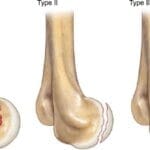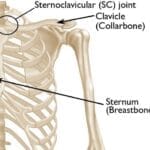Introduction to Minimally Invasive Spine Surgery
Minimally Invasive Spine Surgery (MISS) represents a significant advancement in the field of spinal surgery. Unlike traditional open surgery, which involves large incisions and extensive muscle dissection, MISS uses smaller incisions and specialized instruments to access the spine, reducing tissue damage and promoting quicker recovery. This approach is particularly beneficial for patients suffering from conditions such as herniated discs, spinal stenosis, scoliosis, and other spinal pathologies.
Benefits of Minimally Invasive Spine Surgery
- Smaller Incisions: MISS typically involves incisions less than one inch, which reduces scarring and improves cosmetic outcomes.
- Reduced Blood Loss: The minimally invasive approach minimizes blood loss during surgery.
- Lower Risk of Infection: Smaller incisions and less tissue disruption reduce the risk of postoperative infections.
- Quicker Recovery: Patients often experience faster recovery times and shorter hospital stays, with some procedures being performed on an outpatient basis.
- Less Postoperative Pain: Reduced muscle and tissue damage lead to lower levels of postoperative pain and a decreased need for pain medications.
- Enhanced Precision: Advanced imaging and navigation technologies allow for greater precision during surgery, improving outcomes and reducing the risk of complications.
Common Minimally Invasive Spine Surgery Procedures
- Microdiscectomy: Used to remove portions of a herniated disc that are compressing nerve roots, alleviating pain and improving function.
- Laminectomy: Involves removing part of the vertebral bone called the lamina to relieve pressure on the spinal cord or nerves.
- Spinal Fusion: Stabilizes the spine by fusing two or more vertebrae together, often using bone grafts and metal hardware.
- Vertebroplasty/Kyphoplasty: Minimally invasive procedures that involve injecting bone cement into fractured vertebrae to stabilize and reduce pain.
Preoperative Preparation
Preparation for MISS includes a thorough evaluation by a healthcare provider, including imaging tests such as X-rays or MRI scans. Patients may need to stop certain medications, such as blood thinners, and should avoid smoking as it can delay healing. Detailed instructions will be provided regarding fasting and other preoperative requirements.
Intraoperative Techniques
During MISS, a tubular retractor is often used to create a tunnel through the soft tissues to the spinal column. This retractor holds the muscles open, allowing the surgeon to access the spine with minimal disruption. Advanced imaging techniques, such as fluoroscopy, provide real-time X-ray images to guide the surgeon. In some cases, endoscopic methods are employed, using a small camera to enhance visualization and precision.
Postoperative Care
Postoperative care in MISS is designed to promote quick recovery and minimize complications. Patients may be encouraged to walk and perform light activities shortly after surgery. Pain management typically includes over-the-counter medications, and physical therapy may be recommended to restore strength and mobility. Follow-up appointments are essential to monitor healing and ensure the success of the procedure.
Risks and Complications
While MISS offers numerous benefits, it is not without risks. Potential complications include infection, bleeding, nerve damage, and adverse reactions to anesthesia. Specific risks associated with spinal fusion include nonunion of the fused vertebrae and hardware issues. It is crucial for patients to discuss these risks with their healthcare provider to make an informed decision.
Future Directions and Technological Advances
The field of MISS continues to evolve with advancements in robotic-assisted surgery, augmented reality, and enhanced recovery protocols. These innovations aim to further reduce surgical trauma, improve precision, and optimize patient outcomes. Ongoing research and collaboration among spine surgeons, engineers, and technologists are driving the development of new techniques and tools that promise to revolutionize spinal surgery.
Conclusion
Minimally Invasive Spine Surgery represents a paradigm shift in the treatment of spinal disorders, offering significant advantages over traditional open surgery. By minimizing tissue damage and promoting faster recovery, MISS provides patients with an effective and less invasive treatment option. As technology continues to advance, the future of spinal surgery looks increasingly promising, with improved techniques and better patient outcomes on the horizon.





